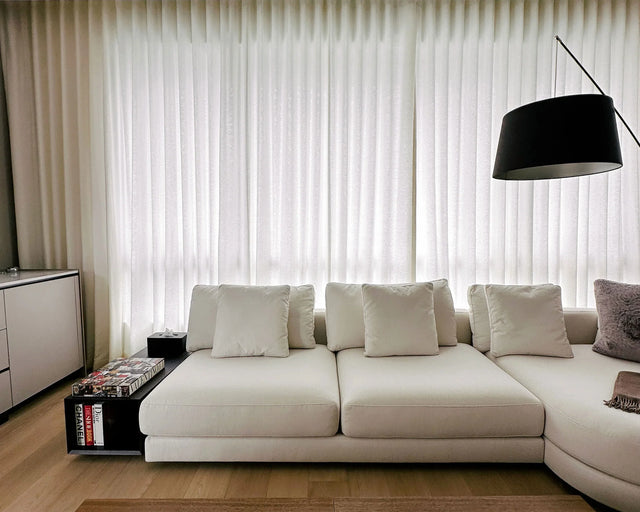The Power of Soft Furnishings: How Textiles Enhance Mood & Well-Being
The spaces we inhabit have a direct influence on how we feel. From the moment we enter a room, the textures, colours, and materials around us begin to shape our emotions. Soft furnishings — such as curtains, rugs, cushions, and upholstery — play a subtle but powerful role in setting the tone of our living spaces. When chosen thoughtfully, these elements can promote calm, boost focus, or even uplift the spirit.
Incorporating tactile comfort into interior design isn’t just about aesthetics — it’s about creating an environment that nurtures emotional and mental well-being. Here’s how the right textiles can transform how we feel at home.
The Science Behind Textures and Emotions
Touch is one of the most immediate ways we connect with our environment. Soft, plush textures like velvet, wool, or brushed cotton activate the brain’s relaxation response, releasing feel-good hormones like serotonin. These fabrics can make a space feel inviting and safe, encouraging us to unwind and let go of daily stress.
The physical sensation of comfort — whether it’s a soft rug underfoot or a cushion behind your back — can reduce anxiety and lower the heart rate. Even loosely draped fabrics, like flowing curtains or layered throws, evoke a sense of ease and fluidity. Texture doesn’t just appeal to the senses; it creates atmosphere.
Colour Psychology in Soft Furnishings
Colour is another key factor in how interiors affect mood, and its influence is well-documented in the field of psychology. Cool tones like soft blues, greens, and greys are known to lower stress levels and induce calm, making them excellent choices for bedrooms and rest areas. Warm hues — such as ochre, terracotta, and muted reds — tend to evoke comfort and intimacy, ideal for living rooms and social spaces.
If productivity is your goal, energising shades like light yellow or sage green can help stimulate mental clarity without causing distraction. Meanwhile, neutrals and earthy tones act as visual anchors, grounding the space and promoting a sense of balance.
For a cohesive and calming aesthetic, consider pairing your soft furnishings with natural wall finishes, such as limewash paint. Options like Kalklitir lime paint offer a matte, textured finish that complements the tactile appeal of soft textiles while enhancing the overall mood of a room.
When styling, think about how colour layering — across cushions, curtains, rugs, and even wall treatments—can support the intended emotional tone of the space. Thoughtful colour choices don’t just tie a room together visually; they influence how we feel within it.
Creating a Calming Sanctuary with Textiles
Soft furnishings can do more than complete a look — they can define spaces designed specifically for restoration and relaxation. In your home decor, areas like bedrooms, reading nooks, and meditation corners can become true sanctuaries when styled with intention. The tactile quality of soft furnishings plays a pivotal role in this transformation, offering gentle textures and soothing visuals that encourage mindfulness.
Start with sheer curtains in natural fabrics such as linen or cotton, which allow filtered daylight to stream in while maintaining a sense of privacy. These layers soften the space and diffuse harsh sunlight, creating a peaceful glow that supports mental calm. Underfoot, tufted rugs add warmth and texture, absorbing noise and cushioning your steps. Drape a lightweight, breathable throw over a reading chair or across a bed to instantly invite comfort and stillness.
Layering remains central to this design approach. Use a mix of airy materials — like muslin or lace — with denser ones, such as wool or textured cotton. This not only adds depth but also allows the space to feel cocooning without being heavy. Avoid overly synthetic or glossy materials, as they can introduce a sense of artificiality that detracts from the natural calm you’re trying to cultivate.
Don’t overlook the role of tone and colour in establishing a tranquil mood. Earthy hues, chalky whites, soft greys, and muted greens encourage a grounded atmosphere. For a more seamless visual flow, consider pairing these textiles with limewash paint such as those from the Kalklitir range. Their matte finish and natural texture harmonise beautifully with soft fabrics, enhancing the overall serenity of the room.
Even simple choices — like swapping out a busy pattern for a subtle weave or choosing an unbleached cotton over a synthetic blend — can shift the emotional tone of a space. The goal is to create a sensory environment that supports presence, comfort, and stillness. Whether you're winding down at night or seeking a quiet moment during the day, these textural and tonal elements work together to ease the transition into rest and restore harmony within the home.
Designing for Wellness Through Texture and Tone
From soothing fabrics to mood-enhancing colours, soft furnishings have the power to shape how we feel in our homes. They create a sense of emotional comfort, promote mental well-being, and help transform everyday spaces into nurturing sanctuaries.
By thoughtfully selecting textiles that align with how you want to feel, you’re not just decorating — you’re designing for wellness. Explore Aratamete’s curated collections of curtains, rugs, and other soft furnishings in Singapore to begin creating a more mindful and harmonious home.
